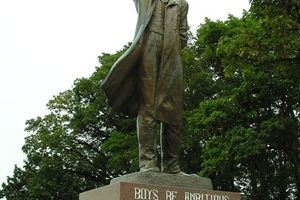
Today, Dr. William Smith Clark is far more recognized in Japan than in his native United States, despite spending only nine months in the former country. A professor of chemistry and American Civil War veteran, he was put in charge of developing the Massachusetts Agricultural College (today the University of Massachusetts Amherst) in 1867. His efforts received intense skepticism from farmers and politicians, and he eventually resigned in frustration after twelve years.
By contrast, the short period of time Clark spent in Hokkaido left an everlasting mark on the island and Japan as a whole. The country was at the time hiring many foreigners in its drive to quickly modernize. Clark was appointed the first vice president of the Sapporo Agricultural College (now Hokkaido University), which did not even exist when he arrived.
He envisioned another agricultural college in the mold of Massachusetts Agricultural College, and his teaching philosophy was significantly more well-received in Japan. Clark also helped develop Hokkaido, then considered a frontier by the Japanese, with new crops and agricultural techniques. In return, he was allowed to send many Japanese plants back to the United States for use there.
In 1976, the 100th anniversary of Clark's arrival in Japan, his statue was built here on Hitsujigaoka Hill overlooking Sapporo. Surely he would be proud of the metropolis of almost two million people the once-tiny settlement has become, as well as the breadbasket that Hokkaido now is. The pedestal reads, "Boys, be ambitious" — Clark's parting words to his students and a widely known quote in Japanese schools today.
0 comments:
Post a Comment